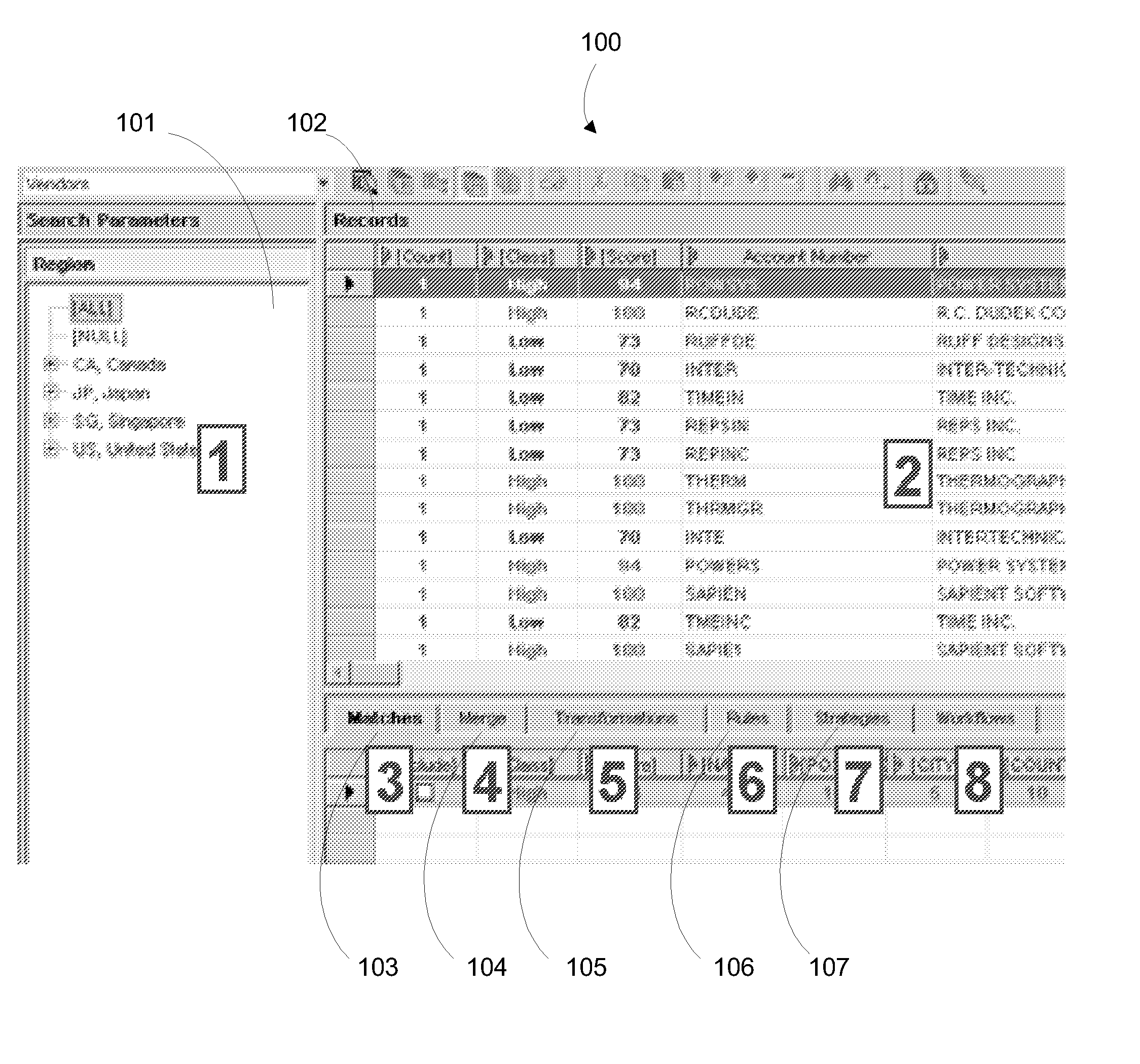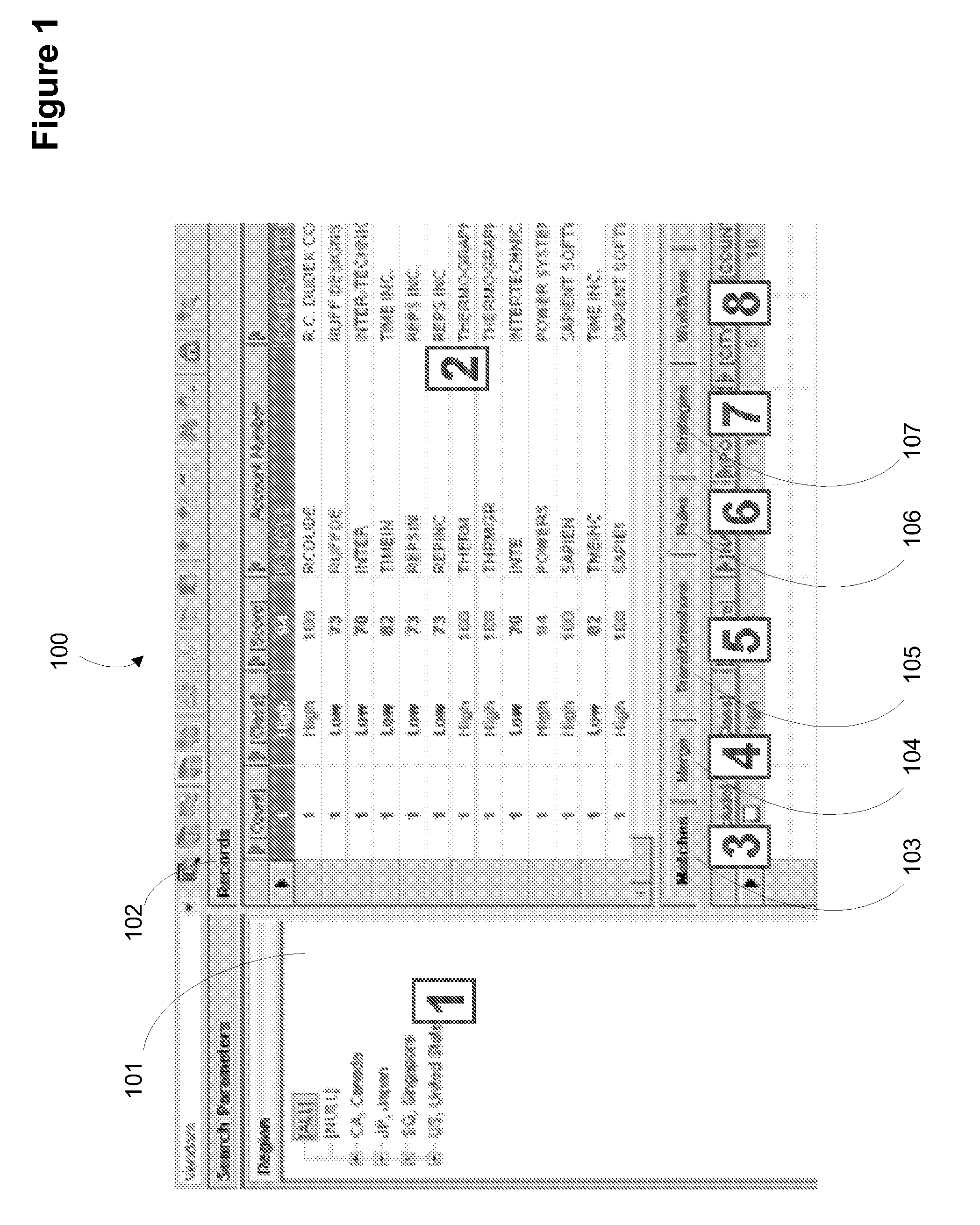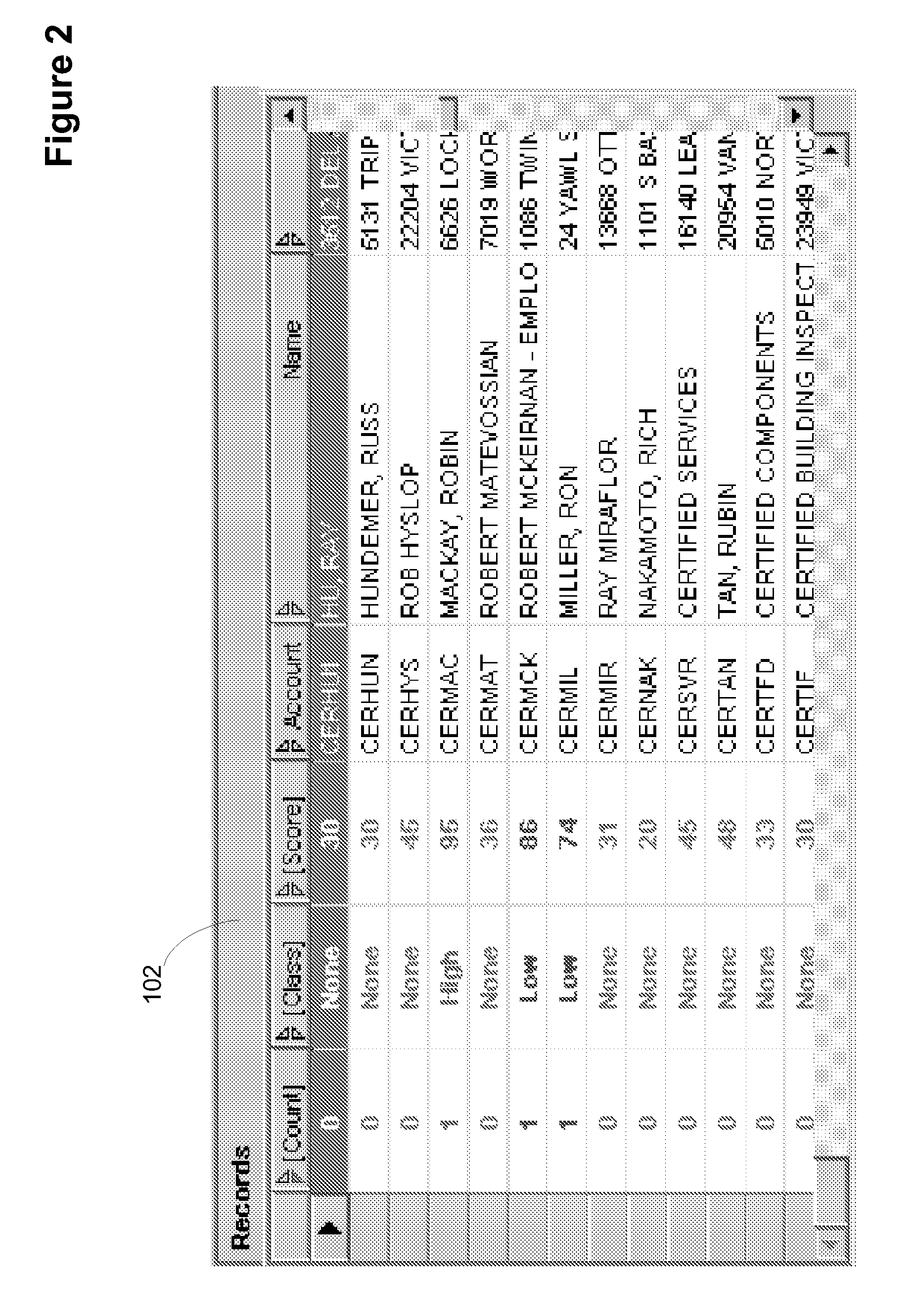[0011] The invention provides rapid searching on strings that do not exactly match a full string held in a field. This allows searches to match strings that are close to the search string, and allows users to normalize data that would not be located with related art systems. In addition, through use of bit vectors, the invention provides for rapid matching. Missing and abbreviated data, or data having “
noise” characters or strings do not preclude a match since relevancy weights allow for a match even if a field made up of one string is not an
exact match with respect to a match string. By
parsing the field(s) searched on, and calculating match scores, the most relevant matches are presented to a user. In addition, matches that would normally not be returned may show missing or non-normalized data that requires user intervention. The invention includes use of indexes to transform groups of related characters, for example a character with an umlaut to a standard character or string. The invention also provides the capability to match transposed characters and ignore “
noise” characters or words. In addition, keyword indexes allow for several words to provide a match, for example, the word “Richard” may match “Rick”, “Ric”, “Rich”, “Richie”, Dick, or other known contractions or conversions of words. The
system collapses this set of values into a bit vector for each word to build a
synonym list.
[0013] Each of the steps implementing an embodiment of the apparatus may utilize past user input to provide intelligent choices to the user for streamlining subsequent matching operations. For example, adapting the choices that are provided to a user based on past user input allows match parameters to be configured in rapid fashion. Furthermore, normalization rules may be implemented for a match in varying form based on the data sources and the geography where the normalization has occurred in the past. This for example allows the apparatus to prioritize regional specific or language specific choices for user selection that are more appropriate for a given region.
[0014] The ability for the apparatus to learn which tokens are relevant and when they are relevant in a particular order allows the apparatus to present token lists limited by interactions with previous users. Based on previous user input, the apparatus is configured to learn for a given match whether to compare two records using all tokens in a given comparison field regardless of position or whether to compare all tokens irrespective of position for the comparison field. This allows the apparatus to construct further matches that take
advantage of previous user inputs and provides a mechanism for the apparatus to provide better choices to a user for creation of a new match.
[0015] The apparatus is also configured in one or more embodiments of the invention to learn weights for tokens as previously gathered from user interactions. Hence the apparatus may provide lists or ranges of weights that previous been identified as confirmed matches in order to guide the user in creating a new match. The weights may be specific to particular groups of data or elements in various data sources. For example, a
postal code may have a
high weight in one match type and a low weight for a different match based on a different set of compared records or fields. The apparatus is configured to present the weights for tokens that make sense for the data that is being matched. This allows the apparatus to present choices to a user that minimize the amount of time that a user must interact with the apparatus to define a match. The matches may be applied to any
record and field in any table of a corporate
database.
[0016] The invention provides a great
advantage in speed facilitated through a
unique user interface for strategy configuration and execution which promotes
usability as an
advantage. A search pane is utilized to display records in a records pane. A matches tab shows at least one selected record as selected from the records pane with potential matches. A merge pane shows records side by side that have been selected for inclusion as selected from the matches tab. A transformations pane shows a
list of the transformations along with the fields to apply the transformations to along with the
list of substitutions to utilize. A rules pane contains a multi-object properties grid that includes a list of rules and a set of properties for each matching rule. A strategies pane shows a multi-object properties pane that includes the list of strategies, the list of properties including high and low thresholds and the list of scoring rules to be utilized. Any other type of
graphical user interface elements besides panes may be utilized so long as the data associated with a respective pane is viewable by a user. The search pane allows for drilldown search as well as free-form search corresponding to fields of the records in a
database. This pane allows for the narrowing of records to the amount desired.
 Login to View More
Login to View More  Login to View More
Login to View More 


